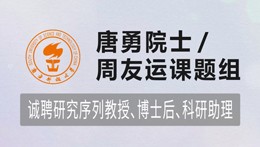-
Do Commercial Place Managers Explain Crime Across Places? Yes and NO(PE) Journal of Quantitative Criminology (IF 4.33) Pub Date : 2024-03-30 Riley Tucker, Daniel T. O’Brien
Objectives Some criminologists of place have argued that property owners and place managers are the key actors exerting guardianship over crime and driving differences in crime across places, giving rise to the “Neighborhoods Out of Places Explanation” (NOPE) theory of crime. However, research to date has yet to fully evaluate if crime statistically varies across properties, their owners, or surrounding
-
Incremental Propensity Score Effects for Criminology: An Application Assessing the Relationship Between Homelessness, Behavioral Health Problems, and Recidivism Journal of Quantitative Criminology (IF 4.33) Pub Date : 2024-02-07 Leah A. Jacobs, Alec McClean, Zach Branson, Edward Kennedy, Alex Fixler
-
Chronic Exposure to Community Violence and Criminal Behavior: A Marginal Structural Modeling Approach Journal of Quantitative Criminology (IF 4.33) Pub Date : 2024-02-06 Damon M. Petrich
-
Co-offending and the Persistence of Violence: A Dynamic Analysis Journal of Quantitative Criminology (IF 4.33) Pub Date : 2024-01-19
Abstract Objectives Previous research underscores the influence of prior violent co-offending on subsequent violent behavior, linking it to a social contagion mechanism akin to the internalization of violence. However, these studies are limited by disregarding the entirety of a criminal career and overlooking diverse co-offending dynamics beyond co-offenders’ characteristics. This study examines the
-
A Bayesian Aoristic Logistic Regression to Model Spatio-Temporal Crime Risk Under the Presence of Interval-Censored Event Times Journal of Quantitative Criminology (IF 4.33) Pub Date : 2024-01-11
Abstract Purpose Crime data analysis has gained significant interest due to its peculiarities. One key characteristic of property crimes is the uncertainty surrounding their exact temporal location, often limited to a time window. Methods This study introduces a spatio-temporal logistic regression model that addresses the challenges posed by temporal uncertainty in crime data analysis. Inspired by
-
Social Change, Cohort Effects, and Dynamics of the Age–Crime Relationship: Age and Crime in South Korea from 1967 to 2011 Journal of Quantitative Criminology (IF 4.33) Pub Date : 2023-09-19 Myunghee You
-
Now You See It, Now You Don’t: A Simulation and Illustration of the Importance of Treating Incomplete Data in Estimating Race Effects in Sentencing Journal of Quantitative Criminology (IF 4.33) Pub Date : 2023-09-16 Benjamin Stockton, C. Clare Strange, Ofer Harel
-
Can We Compare Attitudes Towards Crime Around the World? Assessing Measurement Invariance of the Morally Debatable Behavior Scale Across 44 Countries Journal of Quantitative Criminology (IF 4.33) Pub Date : 2023-09-04 Sandy Schumann, Michael Wolfowicz
-
Racial Bias in Criminal Records Journal of Quantitative Criminology (IF 4.33) Pub Date : 2023-09-01 Ben Grunwald
-
Investigating the Dynamics of Outlaw Motorcycle Gang Co-Offending Networks: The Utility of Relational Hyper Event Models Journal of Quantitative Criminology (IF 4.33) Pub Date : 2023-07-20 David Bright, Giovanni Radhitio Putra Sadewo, Jürgen Lerner, Timothy Cubitt, Christopher Dowling, Anthony Morgan
-
Partners in Criminology: Machine Learning and Network Science Reveal Missed Opportunities and Inequalities in the Study of Crime Journal of Quantitative Criminology (IF 4.33) Pub Date : 2023-07-06 Thomas Bryan Smith, Ruijie Mao, Stan Korotchenko, Marvin D. Krohn
-
Modeling Matters: Comparing the Presumptive Sentence Versus Base Offense Level Approaches for Estimating Racial/Ethnic Effects on Federal Sentencing Journal of Quantitative Criminology (IF 4.33) Pub Date : 2023-06-03 Bryan Holmes, Ben Feldmeyer
-
Economic Booms and Recidivism Journal of Quantitative Criminology (IF 4.33) Pub Date : 2023-05-16 Ozkan Eren, Emily Owens
-
Addressing the ‘Dirty Little Secret’ of Deterrence: Testing the Effects of Increased Police Presence on Perceptions of Arrest Risk Journal of Quantitative Criminology (IF 4.33) Pub Date : 2023-04-09 Rebecca Bucci
-
Identification Problems in Probabilistic Measures of Perceived Arrest Risk: Estimating a Partially-Identified Certainty Effect Journal of Quantitative Criminology (IF 4.33) Pub Date : 2023-03-07 Benjamin C. Hamilton
Objectives Test the effect of perceived likelihood of arrest on criminal behavior under a relaxed set of measurement assumptions. Specifically, responses that are commonly associated with inaccurate reporting practices–particularly, the 0%, 50%, and 100% categories–can be treated as partially identified. By doing so, scholars are able to bound the effect of perceived arrest risk on criminality, which
-
Addressing Ethnic Differences in the Validity of Self-reported Criminal Behaviour Through a Social Desirability Measure Journal of Quantitative Criminology (IF 4.33) Pub Date : 2023-02-07 Willemijn E. Bezemer, Marise Ph. Born, Arjen S. Leerkes
-
Trajectories of Change in Acute Dynamic Risk Ratings and Associated Risk for Recidivism in Paroled New Zealanders: A Joint Latent Class Modelling Approach Journal of Quantitative Criminology (IF 4.33) Pub Date : 2023-01-16 Ariel G. Stone, Caleb D. Lloyd, Benjamin L. Spivak, Nina L. Papalia, Ralph C. Serin
-
Placing Perceptions of Unsafety: Examining Spatial Concentrations and Temporal Patterns of Unsafe Locations at Micro-Places Journal of Quantitative Criminology (IF 4.33) Pub Date : 2022-12-29 Karl Kronkvist
-
An Algorithmic Assessment of Parole Decisions Journal of Quantitative Criminology (IF 4.33) Pub Date : 2022-12-14 Hannah S. Laqueur, Ryan W. Copus
-
The Effect of COVID-19 Restrictions on Routine Activities and Online Crime Journal of Quantitative Criminology (IF 4.33) Pub Date : 2022-12-08 Shane D. Johnson, Manja Nikolovska
-
Prognosticating Offending in Early Adulthood: How Early Can We Predict? Journal of Quantitative Criminology (IF 4.33) Pub Date : 2022-11-27 Thomas A. Loughran, Megan Augustyn, Mauri Matsuda, Kimberly L. Henry
-
An Offenders-Offenses Shared Component Spatial Model for Identifying Shared and Specific Hotspots of Offenders and Offenses: A Case Study of Juvenile Delinquents and Violent Crimes in the Greater Toronto Area Journal of Quantitative Criminology (IF 4.33) Pub Date : 2022-11-05 Jane Law, Abu Yousuf Md Abdullah
-
The Co-evolution of Friendship and Power Relations in a Men's Prison Unit Journal of Quantitative Criminology (IF 4.33) Pub Date : 2022-10-07 Sadaf Hashimi, David R. Schaefer
-
Accounting for Socio-Economic Context in Quantifying the Attractive and Repellent Influence of Built Environment on Firearms Violence in Multiple Cities Journal of Quantitative Criminology (IF 4.33) Pub Date : 2022-10-03 Luke Muggy, Max Griswold, Florentine Eloundou Nekoul, Sean McKenna, Rosanna Smart, Priscillia Hunt
-
The Long-Term Incarceration Consequences of Coming-of-Age in a Crime Boom Journal of Quantitative Criminology (IF 4.33) Pub Date : 2022-10-02 David Bjerk, Shawn Bushway
-
The Impact of Measurement Error in Regression Models Using Police Recorded Crime Rates Journal of Quantitative Criminology (IF 4.33) Pub Date : 2022-08-27 Jose Pina-Sánchez, David Buil-Gil, Ian Brunton-Smith, Alexandru Cernat
-
Spatiotemporal Crime Patterns Across Six U.S. Cities: Analyzing Stability and Change in Clusters and Outliers Journal of Quantitative Criminology (IF 4.33) Pub Date : 2022-08-24 Rebecca J. Walter, Marie Skubak Tillyer, Arthur Acolin
-
Where is the Evidence? Comparing the Effects of Evidence Strength and Demographic Characteristics on Plea Discounts Journal of Quantitative Criminology (IF 4.33) Pub Date : 2022-08-13 Kevin Petersen, Allison D. Redlich, David B. Wilson
-
Does Reaching the Statute of Limitations Affect the Recidivist Behavior of Environmental Aggressors in Brazil? Journal of Quantitative Criminology (IF 4.33) Pub Date : 2022-08-10 Daniel de Abreu Pereira Uhr, Júlia Gallego Ziero Uhr, Renan Porn Peres, Manoel Gehrke, Magnum Koury de Figueiredo Eltz
Objectives This study examines the role of law enforcement procedures for environmental offenses. We test whether reaching the statute of limitations is associated with the recidivism of offenses against the flora in Brazil. Methods We analyze the universe of infractions issued by Brazil’s Federal Environmental Agency from 2000 to 2010 using survival analysis and reweighting methods. Results Findings
-
Impact of the Reform to Non-custodial Sanctions in Chile Journal of Quantitative Criminology (IF 4.33) Pub Date : 2022-07-14 Gabriel Moraga, Ana María Morales, Jorge Fábrega, Sebastián Salinero
-
Housing Instability Following Felony Conviction and Incarceration: Disentangling Being Marked from Being Locked Up Journal of Quantitative Criminology (IF 4.33) Pub Date : 2022-06-25 Brielle Bryan
-
How do Racial and Ethnic Disparities Emerge in the Use of Restrictive Housing for Prison Rule Violations? Journal of Quantitative Criminology (IF 4.33) Pub Date : 2022-06-23 John Wooldredge, Joshua Cochran
Objectives In light of empirical findings suggesting no substantive main effects of an incarcerated person’s (IP’s) race or ethnicity on the odds of placement in restrictive housing (RH) for rule violations, we investigated whether these effects are dependent on offense severity and context, including characteristics of facilities that could theoretically increase stakeholder reliance on biased stereotypes
-
Impulsivity, Peers, and Delinquency: A Dynamic Social Network Approach Journal of Quantitative Criminology (IF 4.33) Pub Date : 2022-06-18 Daniel T. Ragan, D. Wayne Osgood, Derek A. Kreager
-
A Robust Measure to Uncover Community Brokerage in Illicit Networks Journal of Quantitative Criminology (IF 4.33) Pub Date : 2022-06-18 Masarah Paquet-Clouston, Martin Bouchard
-
Officer Networks and Firearm Behaviors: Assessing the Social Transmission of Weapon-Use Journal of Quantitative Criminology (IF 4.33) Pub Date : 2022-06-15 Marie Ouellet, Sadaf Hashimi, George G. Vega Yon
-
When Things Turn Sour: A Network Event Study of Organized Crime Violence Journal of Quantitative Criminology (IF 4.33) Pub Date : 2022-04-12 Nynke M. D. Niezink, Paolo Campana
-
Absence of Street Lighting May Prevent Vehicle Crime, but Spatial and Temporal Displacement Remains a Concern Journal of Quantitative Criminology (IF 4.33) Pub Date : 2022-03-30 Lisa Tompson,Rebecca Steinbach,Shane D. Johnson,Chun Siong Teh,Chloe Perkins,Phil Edwards,Benedict Armstrong
Abstract Objectives This paper estimates the effect of changes in street lighting at night on levels of crime at street-level. Analyses investigate spatial and temporal displacement of crime into adjacent streets. Methods Offense data (burglaries, robberies, theft of and theft from vehicles, and violent crime) were obtained from Thames Valley Police, UK. Street lighting data (switching lights off at
-
The Emergence and Evolution of Problematic Properties: Onset, Persistence, Aggravation, and Desistance Journal of Quantitative Criminology (IF 4.33) Pub Date : 2022-03-30 Daniel T. O’Brien, Alina Ristea, Riley Tucker, Forrest Hangen
-
Understanding How Offending Prevalence and Frequency Change with Age in the Cambridge Study in Delinquent Development Using Bayesian Statistical Models Journal of Quantitative Criminology (IF 4.33) Pub Date : 2022-03-29 Julian Stander,David P. Farrington,Caroline Lubert
-
In Pursuit of Interpretable, Fair and Accurate Machine Learning for Criminal Recidivism Prediction Journal of Quantitative Criminology (IF 4.33) Pub Date : 2022-03-28 Caroline Wang, Bin Han, Bhrij Patel, Cynthia Rudin
Objectives We study interpretable recidivism prediction using machine learning (ML) models and analyze performance in terms of prediction ability, sparsity, and fairness. Unlike previous works, this study trains interpretable models that output probabilities rather than binary predictions, and uses quantitative fairness definitions to assess the models. This study also examines whether models can generalize
-
Visualizing Changes in the Age-Distributions of Homicides in the United States: 1964–2019 Journal of Quantitative Criminology (IF 4.33) Pub Date : 2022-03-16 Robert M. O’Brien
Objective To demonstrate how visualization can aid in understanding crime rate data and provide new insights and hypotheses for some central criminological questions about homicide offending over time. Methods The research uses arrest data that is based on a mixture of single year age data and other age groupings to produce single years of age estimates of homicide offending for those 15–64 from 1964
-
-
Is Police Misconduct Contagious? Non-trivial Null Findings from Dallas, Texas Journal of Quantitative Criminology (IF 4.33) Pub Date : 2022-01-12 Cohen R. Simpson, David S. Kirk
Objectives Understanding if police malfeasance might be “contagious” is vital to identifying efficacious paths to police reform. Accordingly, we investigate whether an officer’s propensity to engage in misconduct is associated with her direct, routine interaction with colleagues who have themselves engaged in misbehavior in the past. Methods Recognizing the importance of analyzing the actual social
-
Correction to: Long-Term Dynamics of Neighborhoods and Crime: The Role of Education Over 40 Years Journal of Quantitative Criminology (IF 4.33) Pub Date : 2021-11-09 Adam Boessen,Marisa Omori,Claire Greene
-
Do Sports Programs Prevent Crime and Reduce Reoffending? A Systematic Review and Meta-Analysis on the Effectiveness of Sports Programs Journal of Quantitative Criminology (IF 4.33) Pub Date : 2021-11-06 Irina Jugl, Doris Bender, Friedrich Lösel
Objectives Sports programs are widely implemented as measures of crime prevention. In contrast to their popularity, there is little systematic knowledge about their effectiveness. This systematic review and meta-analysis have been carried out to fill this gap. In a systematic review, we gathered data on evaluated prevention programs specifically designed to prevent crime and delinquency. We then conducted
-
The Effect of Pretrial Detention on Labor Market Outcomes Journal of Quantitative Criminology (IF 4.33) Pub Date : 2021-11-05 Nicolás Grau, Gonzalo Marivil, Jorge Rivera
Objective To study the effect of pretrial detention on post-verdict labor market outcomes. Method We combine Chilean individual administrative data for criminal cases and labor market outcomes to estimate the effect of pretrial detention for first-time defendants on labor outcomes using the Difference-in-differences (DiD) method, controlling by individual fixed effects, and an instrumental variables
-
Exploring the Neighborhood-Level Impact of Retail Marijuana Outlets on Crime in Washington State Journal of Quantitative Criminology (IF 4.33) Pub Date : 2021-10-30 Thacker, John, Martin, Maggie Elliott, Cristy, Yvonne, Rabideau, Deirdre, Shively, Michael, Kling, Ryan
Objectives Since 2012, the production, sale, and use of marijuana and its derivatives for recreational consumption have been legalized in 15 states and Washington, DC, but remain controversial nationwide. Critics argue that marijuana retail outlets attract criminal activity in surrounding areas and promote social disorganization. This paper examines this issue by analyzing secondary data from Washington
-
Long-Term Dynamics of Neighborhoods and Crime: The Role of Education Over 40 Years Journal of Quantitative Criminology (IF 4.33) Pub Date : 2021-10-01 Boessen, Adam, Omori, Marisa, Greene, Claire
Objectives Over the last 40 years, considerable changes have occurred in both education and crime, and in this study, we examine the longer-term consequences of education for violence in communities. We argue that the impact of education on crime depends on the temporal and spatial context of educational levels. Specifically, we focus on whether the type of educational attainment matters and the broader
-
The Benefits of Patrol Officers Using Unallocated Time for Everyday Crime Prevention Journal of Quantitative Criminology (IF 4.33) Pub Date : 2021-09-30 Wooditch, Alese
Objectives Random police patrol, which spreads resources in an unfocused way across a city, remains a dominant strategy despite widespread acceptance that it is ineffective at preventing crime. Research also suggests that patrol officers could make better use of unallocated time if they were to engage in hot spots policing rather than random patrol. Paired with knowledge that police officers have a
-
Educational Consequences of Paternal Incarceration: Evidence from a Danish Policy Reform Journal of Quantitative Criminology (IF 4.33) Pub Date : 2021-09-09 Anker, Anne Sofie Tegner
Objectives This study estimates the causal effect of paternal incarceration on children’s educational outcomes measured at the end of compulsory schooling (9th grade) in Denmark. Methods I use Danish administrative data and rely on a sentencing reform in 2000, which expanded the use of non-custodial alternatives to incarceration for traffic offenders, for plausibly exogenous variation in the risk of
-
Weekly Crime Concentration Journal of Quantitative Criminology (IF 4.33) Pub Date : 2021-09-01 Prieto Curiel, Rafael
Objectives Examine and visualise the temporal concentration of different crime types and detect if their intensity varies through distinct moments of the week. Methods The “heartbeat of the crime signal” is constructed by overlapping the weekly time they were suffered. This study is based on more than 220,000 crimes reported to the Mexico City Police Department between January 2016 and March 2020 to
-
Hate in Word and Deed: The Temporal Association Between Online and Offline Islamophobia Journal of Quantitative Criminology (IF 4.33) Pub Date : 2021-08-28 Wiedlitzka, Susann, Prati, Gabriele, Brown, Rupert, Smith, Josh, Walters, Mark A.
Objectives The aim of the present study is to explore whether there is a temporal association between anti-Islamic online and offline hate, and if so in which direction. Methods We used data on hateful Twitter content, and hate incidents and hate crimes/offences recorded by the Metropolitan Police Service in the United Kingdom to analyse this association, using time-series analysis. This study is unique
-
Is There a Long-Term Criminogenic Effect of the Exposure to a Paternal Conviction During Upbringing? An Analysis of Full Siblings Using Swedish Register Data Journal of Quantitative Criminology (IF 4.33) Pub Date : 2021-08-26 Sivertsson, Fredrik, Carlsson, Christoffer, Hoherz, Andreas
Objectives The current study analyzed the association between a final paternal conviction that occurred sometime 10 years prior to birth through age 14 and subsequent child conviction risk to age 25. Methods We used Swedish register-based data on a two-generation dataset originating from a parental generation born in 1953. We employed a combination of population-averaged models that controlled for
-
Questionable Research Practices and Open Science in Quantitative Criminology Journal of Quantitative Criminology (IF 4.33) Pub Date : 2021-08-19 Chin, Jason M., Pickett, Justin T., Vazire, Simine, Holcombe, Alex O.
Objectives Questionable research practices (QRPs) lead to incorrect research results and contribute to irreproducibility in science. Researchers and institutions have proposed open science practices (OSPs) to improve the detectability of QRPs and the credibility of science. We examine the prevalence of QRPs and OSPs in criminology, and researchers’ opinions of those practices. Methods We administered
-
Familial Clustering of Trends in Aggression Journal of Quantitative Criminology (IF 4.33) Pub Date : 2021-08-11 van der Laan, Camiel M., van de Weijer, Steve G. A., Nivard, Michel G., Boomsma, Dorret I.
Objectives Examine trends in aggressive behavior from 1991 to 2015, investigate whether these trends apply equally to all individuals, and explore the extent to which differences in trends over time cluster within families. Methods Our study included 69,465 measures from 40,400 individuals, from 15,437 Dutch families. Aggression was measured between 1 and 4 times by self-report. We fitted a mixed effects
-
Changes in Jail Admissions Before and After Traumatic Brain Injury Journal of Quantitative Criminology (IF 4.33) Pub Date : 2021-08-11 Schwartz, Joseph A., Wright, Emily M., Spohn, Ryan, Campagna, Michael F., Steiner, Benjamin, Epinger, Ebonie
Objectives Traumatic brain injury (TBI) is differentially concentrated within incarcerated populations. Despite the consistency of this observation, the timing of within-individual changes in criminal justice contact in relation to TBI remains under-investigated. For example, previous studies have primarily considered TBI as a causal influence of later criminal justice contact. However, TBI may also
-
The Importance of Importance Sampling: Exploring Methods of Sampling from Alternatives in Discrete Choice Models of Crime Location Choice Journal of Quantitative Criminology (IF 4.33) Pub Date : 2021-07-31 Curtis-Ham, Sophie, Bernasco, Wim, Medvedev, Oleg N., Polaschek, Devon L. L.
Objectives The burgeoning field of individual level crime location choice research has required increasingly large datasets to model complex relationships between the attributes of potential crime locations and offenders’ choices. This study tests methods of sampling aiming to overcome computational challenges involved in the use of such large datasets. Methods Using police data on 38,120 residential
-
Statistical Power and Search Intensity Bias in Hit Rates Tests of Discrimination Journal of Quantitative Criminology (IF 4.33) Pub Date : 2021-07-20 Alexander Lundberg
Objectives This study derives the statistical power of the common hit rates test of taste-based discrimination in police searches. It also identifies search intensity as a source of bias in the test and proposes a simple empirical adjustment to account for the bias. Methods Data simulations, along with two empirical applications to motor vehicle search data, display the practical importance of both
-
Understanding Changes in Violent Extremist Attitudes During the Transition to Early Adulthood Journal of Quantitative Criminology (IF 4.33) Pub Date : 2021-07-08 Amy Nivette, Lea Echelmeyer, Frank Weerman, Manuel Eisner, Denis Ribeaud
Objectives The current study seeks to explain changes in support for violent extremism during the transition to early adulthood. This period during the life course could increase uncertainty and vulnerability to radicalization, or alternatively lead to maturation, prosocial bonds, and consequently less support for violent extremism. In the absence of population-based longitudinal data on violent extremist
-
Restricting Arranged Marriage Opportunities for Danish Minority Youth: Implications for Criminal Convictions Journal of Quantitative Criminology (IF 4.33) Pub Date : 2021-07-07 Lars Højsgaard Andersen, Signe Hald Andersen, Peer Ebbesen Skov
Objectives To measure the effect of arranged marriages on criminal convictions among male ethnic minority youth in Denmark. Methods To identify the effect, we rely on administrative data from before and after a national policy reform in 2002 that restricted ethnic minority youths’ access to their most prevalent type of marriage until both spouses were at least 24 years of age. We use difference-in-differences


























 京公网安备 11010802027423号
京公网安备 11010802027423号